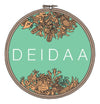In this vlog, learn with Samita how to do Mood Boards.The parameters of a desing brief are determined by the customer profile, inspiration and trends. We have to work within the design brief to arrive at a particular product. What questions do you answer before you include a product in your range lineup?
How to do Mood Boards - Identify a gap in the market:
Is your customer looking for the product? Can you see your customer buying the product? Is it satisfying a particular need or is it filling a gap in the market?
Unique Selling Point:
Will the product be unique? Has no one done it before?
Competitor analysis:
What are your competitors doing? How do their products compare with yours? What price points are they selling at?
Feasibility study:
What fabric or what kind of trims and notions will you use? Will the fabric be washable? Will it be strong and durable? Will it please your customers? What kind of tender loving care will it take?
Optimum Price:
Can i sell it at an optimum price - a price that a customer expects to pay Deidaa?
Organic Textiles and Ethical Production:
Deidaa is certified for organic textiles and ethical production. Does the product fulfill the conditions of organic and ethical audits?
Once we have ticked all of the above boxes we can make a particular product.
Visual Diary:
We begin with a visual diary. A visual diary is a notebook you fill up with notes, clippings, fabric swatches, that contribute to the making of a product. A visual diary can be a physical or a virtual notebook. I use a mobile phone appliction called Notes. You can create different folders. You can have a fabric reference folder, a print reference folder, a color reference folder, and a silhouette reference folder. All your musings, jottings, notes and scribbles go into the visual diary.
Mood Boards:
Mood boards develop from visual diaries. A mood board doesn't say exactly what your products will be. It gives you a sense of direction. A mood board has your fabric boards, color boards, and silhouette board. If you have a good mood board you can create a very strong range lineup. A mood board is a generic overview of what we can expect from you in 2021.
Case Study 1 - Deidaa's Australia Scarves
For Deidaa's Australia scarves, we wanted something which would convey the essence of Australia. We looked for products and we found a gap in the market. We investigated into Australia's unique flora and fauna. We decided to create a product range that would reflect the unique flora and fauna of australia.
The next step was investigation and research. For one year we went to the botanical gardens. We explored regional Australia. We zeroed in on a few images of flowering plants. We decided to put these flowering plants on our scarves. We tried working with different fabrics. We selected silk modal and linen - silk for luxury, modal fro strength and line for comfort. We decided on digital printing because we felt only digital printing would do justice to the colors of australia. Digital print is eco-friendly with no effluents or toxic emissions. Deidaa's Australia scarves were launched. These floral wraps have become Deidaa's bestsellers since.
Case Study 2 - Deidaa's Eco Warrior Organic Toys
Australia's unique birds and animals are not found anywhere in the world. They are very cuddly and lovable. Deidaa's dilemma was - how to depict these animals in our product range? we wanted that our koalas and kangaroos should not be generic souvenirs. They should have an identity of their own.
We researched fabric and filling. We had organic cotton leftover shreds that we would throw away after we made our garments. We used our leftover organic cotton to make the shell of the toy. Polyester filling is a big no-no for Deidaa. Cotton is soft, but cotton becomes lumpy with use. Plastic or PET bottles are one of the worst offenders when it comes to pollution. We thought why not use plastic bottles for filling? We did not chop up plastic bottles and put it in our toys. This would not satisfy Deidaa's stringent safety and health requirements. We sent our plastic bottles to a state-of-the-art facility. The facility processed all the plastic bottles into polyester fiber. This fibre went inside Deidaa's organic toys.
We made different animals, different concepts and different characters. We finally selected six animals, the kangaroo and the joey, the owl, the koala, the easter bunny, and the duck. We had to have the dog. Hot dog is inspired by Deidaadog Simba.
We did not confine ourselves to Australian animals. We wanted to include a broad range of animals and characters, ideas and concepts. Ukali koala has since become Deidaa's mascot. He has contributed to the bushfire recovery in 2020.
How do you do your mood boards? Share your top designing tips with Deidaa. Post comments at https://www.facebook.com/deidaaecogiftsonline/, #regram @deidaaecogiftsonline.
Learn more at

